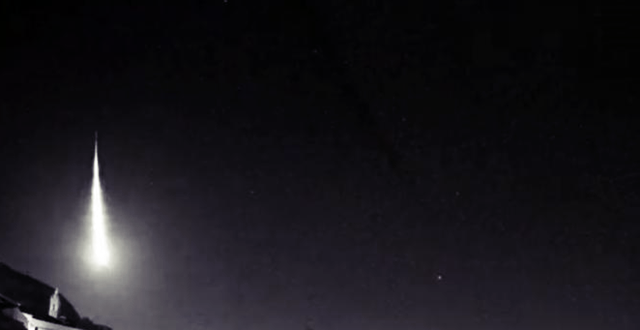Residents in the province of Cádiz are being asked to assist in locating a potentially "missing meteorite" that may have landed a short distance inland from the Costa de la Luz. A meteorite, traveling at an astonishing speed of 53,000 kilometers per hour (approximately 33,000 mph), produced dazzling and rapid-moving lights over the skies of Spain's southwestern region on October 14th.
This "space ball," whose luminous trail was observed from as far as 700 kilometers (about 435 miles) away at the SPMN observatory in Benicàssim on the east coast, is believed to have fragmented upon entry into the Earth's atmosphere. Fragments of the meteorite are thought to have landed in or near the towns of Jerez de la Frontera and Sanlúcar de Barrameda.
The Spanish Meteor Network (SPMN) has called upon individuals residing in these areas to be on the lookout for remnants of the space rock. The SPMN, citing its station-based triangulation, has indicated that this meteor produced meteorites. Its trajectory commenced at an altitude of 95 kilometers (roughly 59 miles) above sea level off the coast of Cádiz, descending in a series of spectacular bursts to about 17 kilometers (approximately 10.6 miles) high. This resulted in a meteor shower over Sanlúcar and Jerez.
The collection of these meteorite fragments is essential for scientific research. Distinguished scientist and writer Josep M. Trigo-Rodríguez characterizes meteorites as captivating entities that should be accessible to everyone. In light of this, those in the Jerez and Sanlúcar vicinity who are searching the ground for clues might wonder how to differentiate a space-rock shard from an ordinary piece of tarmac.
In anticipation of this query, the SPMN has delineated specific attributes that distinguish meteorites from terrestrial rocks. Meteorites possess a delicate, molten-looking black crust formed due to the extreme heat they endure upon entering the Earth's atmosphere. Moreover, they often bear "flat faces" resulting from the friction they encounter at their extraordinary travel speed. This imparts a polygonal appearance or a crystalline facet.
Their edges might appear jagged, almost sanded or dulled, and frequently contain granules of various metals. Generally, meteorites are heavier compared to native Earth rocks. When meteorites are discovered in Spain, they are subject to Law 42/2007, enacted 15 years ago, which mandates their placement in museums or public exhibition spaces. This legislation is in place since meteorites are regarded as part of the nation's geological heritage and are considered public property. Consequently, selling meteorites is unlawful.
Individuals who suspect they've come across a meteorite are strongly encouraged to reach out to the SPMN The team can quickly determine whether a photograph or video displays a piece of a space fireball. If a meteorite is confirmed, the SPMN promises to study and document it without causing any inconvenience or expenses to the contributor. The network prioritizes the examination of "fresh" meteorites that have recently fallen, yet even those found by chance that are older can still be of significant interest.








0 Comments